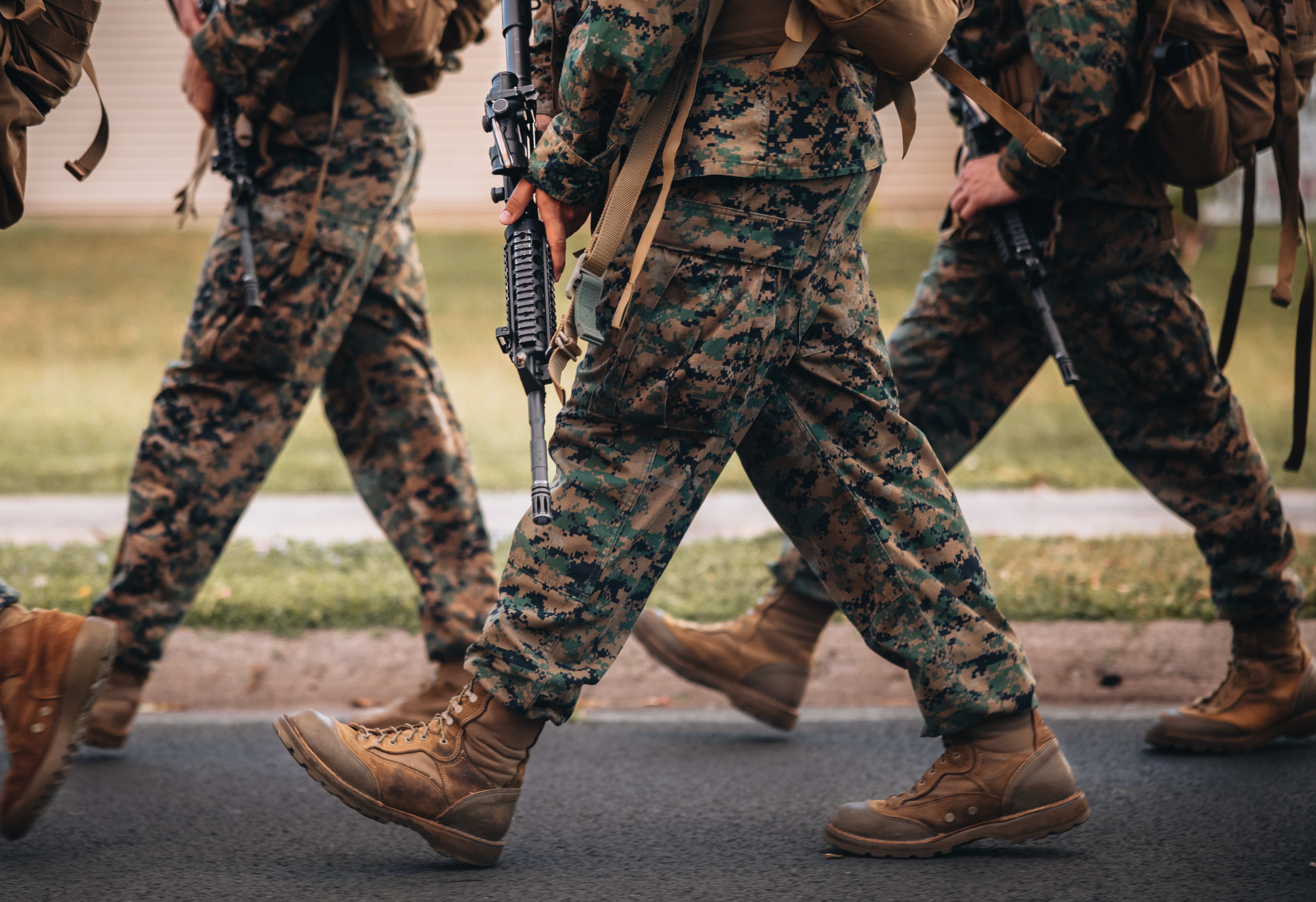
After three years of modeling and experimentation to overhaul the Marine Corps for an island-hopping campaign in the Indo-Pacific, service officials say they are done divesting of older platforms and capabilities and need more money to continue modernizing the force.
The annual update to Force Design 2030, released Monday, says the Marines will ask for more funding to address infrastructure needs like base housing while continuing to build a lighter force that’s mobile enough to move smaller units around islands and shorelines.
Download the document here.
“One of the big shifts that we did this year from a planning and possibly a programming perspective is that we said divestments are complete. We are no longer looking to figure out what do we need to get rid of in order to modernize,” Brig. Gen. Stephen Lightfoot, the director of the Marine Corps’ Capabilities Development Directorate, told reporters last week ahead of the report’s rollout.
“I think this year, in our planning stages, we assessed we’re going to start shifting some of that focus where we’ve almost been solely focused on lethality, and kill webs, [to] now we’re going to be looking at the fact that a lot of our bases and stations … there’s lot of things we need to do to operationalize our bases and stations. And we’re realizing that we need to focus some of our effort, some of our resources, into the personnel and the equipment that we use on our bases so that they’re more resilient.”
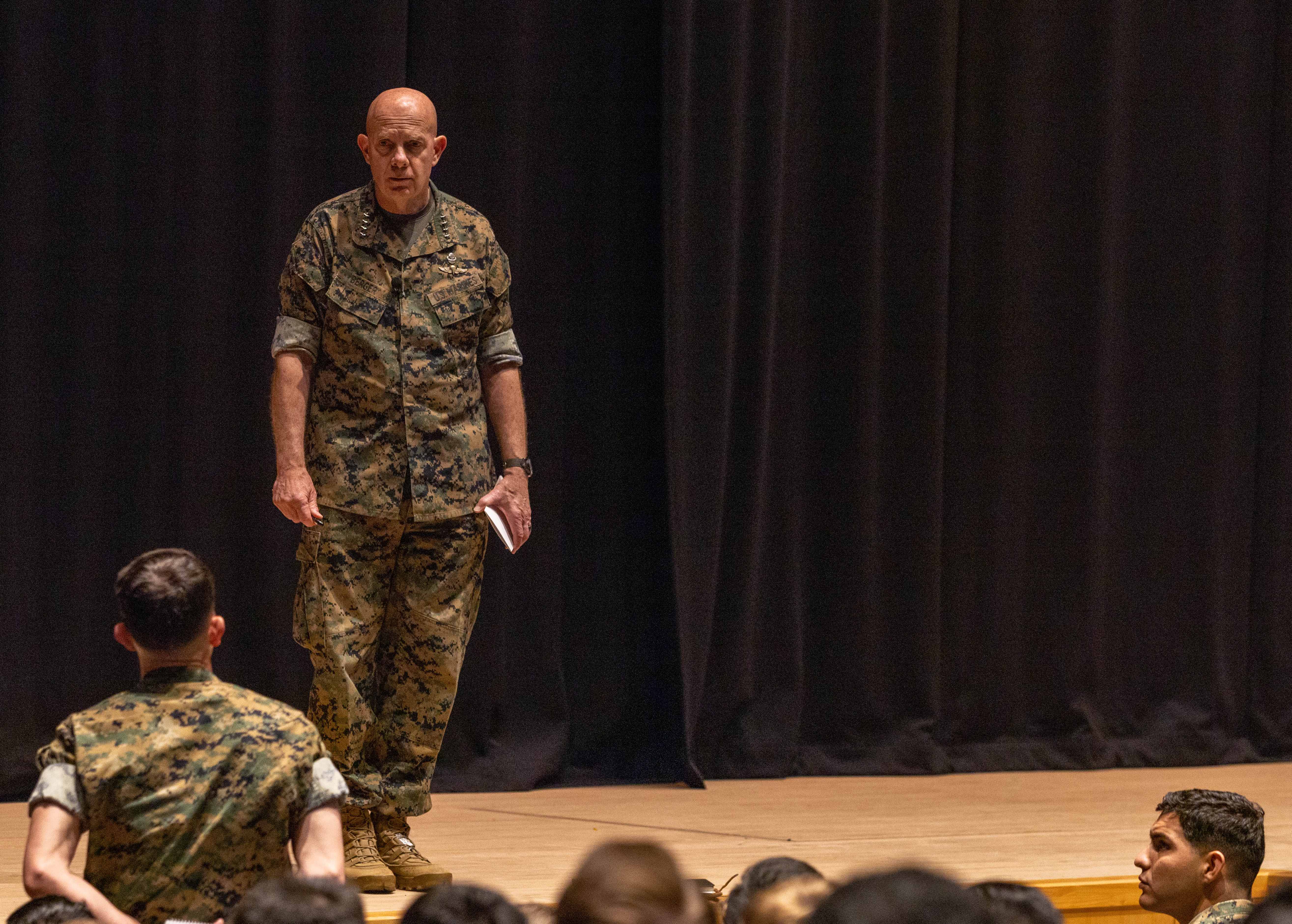
The report’s release comes ahead of Commandant Gen. David Berger’s expected retirement this summer. For four years, Berger embarked on a sweeping overhaul of the force. Upon assuming his role as commandant in 2019, he argued the force was not manned, trained or equipped for the type of conflict the Pentagon’s National Defense Strategy envisioned in the future.
Since then, the Marine Corps has divested of tanks, bridging companies, and some of its aviation squadrons, while planning to convert several Marine Regiments to Marine Littoral Regiments that can perform Expeditionary Advanced Base Operations, a concept that would see smaller units of Marines moving around islands and launching anti-ship missiles at adversaries.
“Although many elements of FD2030 are already in use, our modernization has only just begun. We must capitalize on our momentum and accelerate modernization so that we stay ahead of competitors,” the 2023 update reads.
“To accelerate most effectively, we will put capabilities as rapidly as possible into the hands of tactical commanders who are campaigning every day. Time is not on our side, and we must work at a tempo greater than our competitors. We owe the [Marine Expeditionary Force commanding generals] integrated warfighting solutions placed in the hands of their Marines as quickly as possible.”
Amphibs
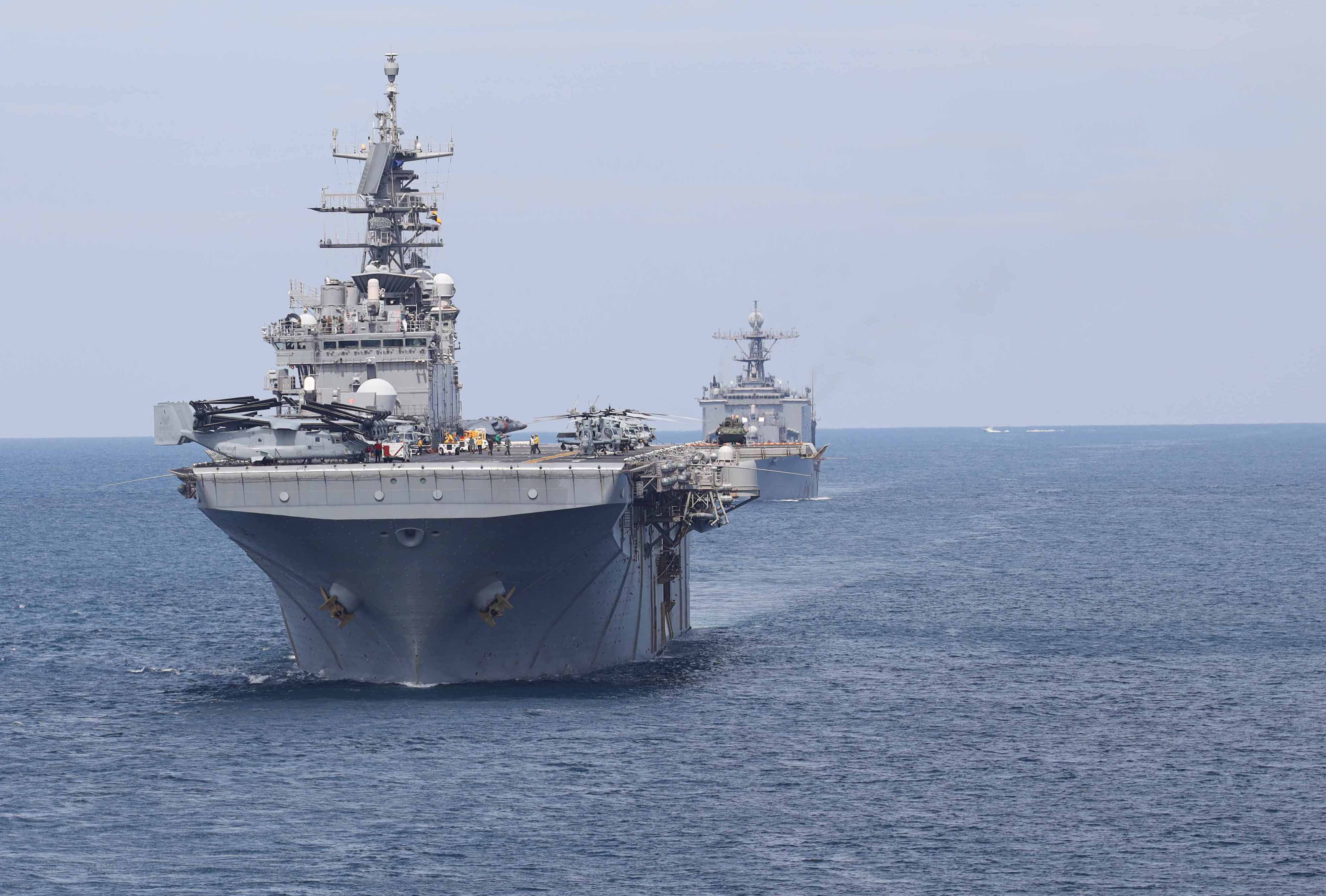
Amid the current debate over the future of the U.S. Navy’s amphibious procurement plans, the Marine Corps is assessing what the Amphibious Ready Groups and Marine Expeditionary Units of the future will look like.
By Jan. 1, 2024, the deputy commandant for combat development and integration must “publish an ‘ARG/MEU Next’ concept with an aim point of 2040 to inform future requirements development,” according to the update.
The Marine Corps is already working with Navy developers on a 21st-century amphibious operations concept to evaluate what types of capabilities the force will require in the 2040s, Scott Lacy, the deputy director of the Marine Corps Warfighting Lab, told USNI News and another reporter during a separate call ahead of the rollout.
“Think of this concept as looking at the how, not how many, and it’s really what kinds of capabilities are going to be necessary to operate across the spectrum of amphibious operations in that time period,” he said of the 21st-century concept.
Officials acknowledged the ongoing readiness issues facing the amphibious force, as the Navy decommissions the aging Whidbey Island-class dock landing ships and halts the procurement of new amphibious transport docks so the service, along with the Office of the Secretary of Defense’s Cost Assessment and Program Evaluation office, can assess both program cost and requirements.
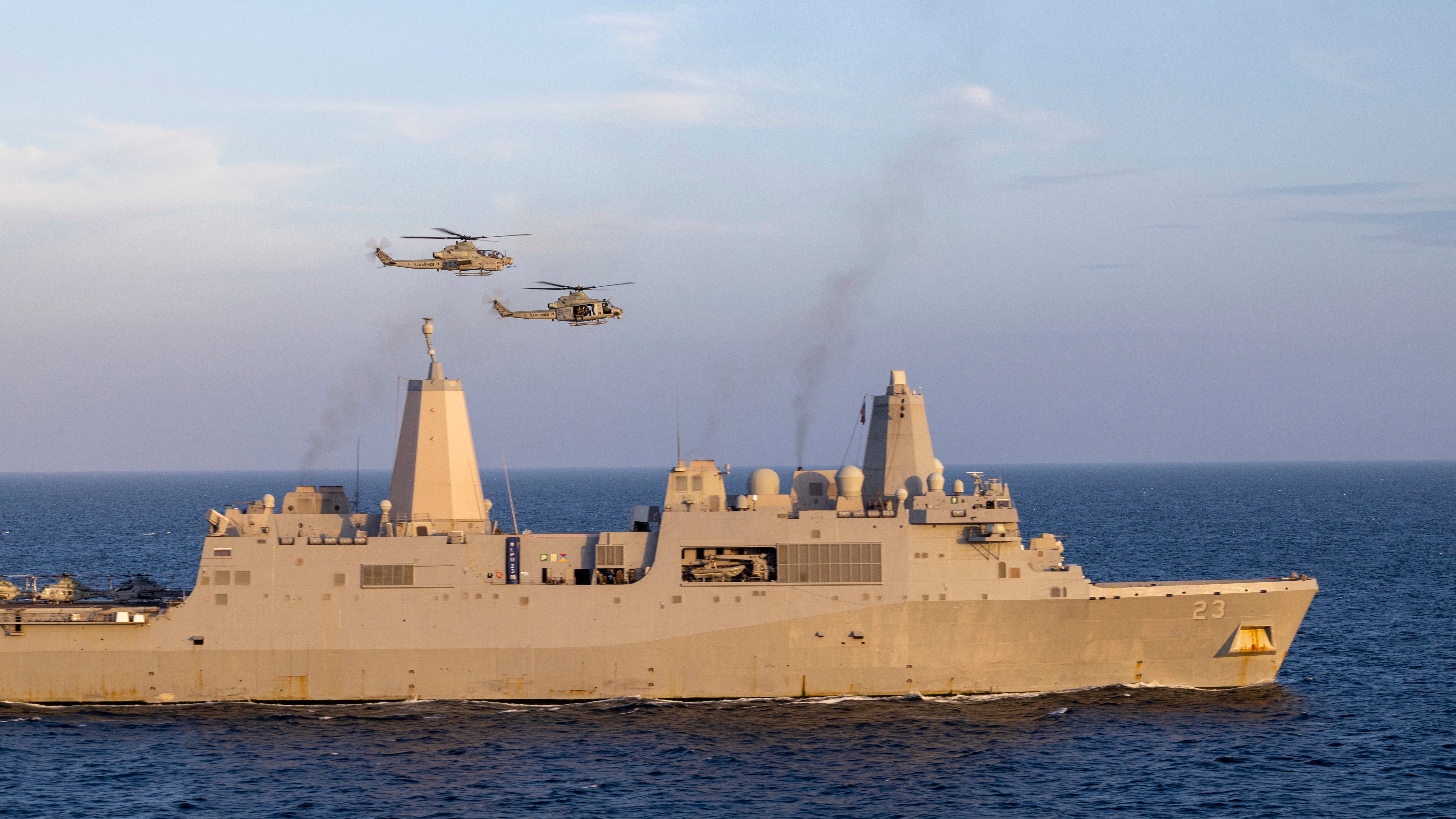
“There’s a mathematic problem here with the 31 amphibs that we have right now and then the maintenance associated with it,” Col. Daniel Wittnam, the Director of the Marine Corps Integration Division, said during that same call.
To get after this problem, the Marine Corps is assessing what other platforms, like Expeditionary Fast Transport ships, and deployment models it could use to fulfill the missions typically performed by amphibious ships.
“How can we come up with different deployment models and different configurations to try and get back to that, having those three MEUs forward deployed – maybe not with all three of the LPDs, LHAs, the traditional ships – but a configuration that we might be forward deployed permanently, with less than optimal mix, but still having Marines forward deployed with the Navy,” Wittman said.
The “ARG/MEU Next” concept is meant to assess what future amphibious ships look like and what might go on those ships, said Lt. Gen. Karsten Heckl, deputy commandant for combat development and integration. The 21st-century amphibious operations concept will help flesh this out.
Reconnaissance
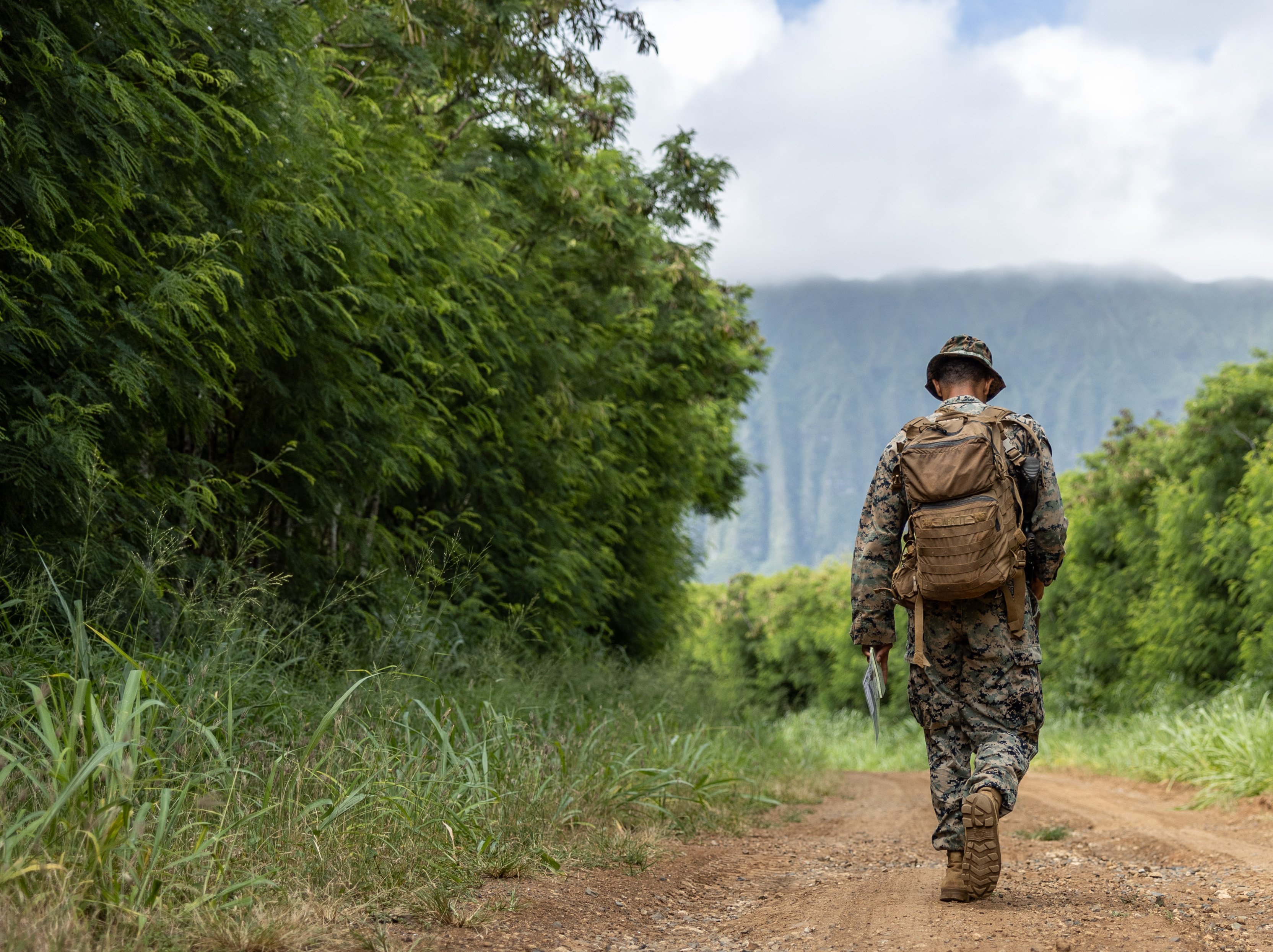
The Marine Corps is pushing to speed up shifting its light armored reconnaissance battalions to mobile reconnaissance battalions.
The missions for the new MRBs include “maritime reconnaissance (waterborne) companies, light mobile companies, and light armored companies, all with greater reach and lethality, promises to effectively address the requirement for multi-domain reconnaissance,” according to the report.
While the Marine Corps is still pursuing a replacement for its Light Armored Vehicle, that new platform, known as the Advanced Reconnaissance Vehicle, will be a family of systems.
“The one thing we have acknowledged is that we do still have a requirement for some type of LAV thing and it’s going to be ARV,” Heckl said in the call with two reporters. “When you think of from an [U.S. Africa Command], a [U.S. Central Command], a [U.S. European Command] perspective, that piece of equipment is necessary. So there will clearly be a requirement there for me to execute on.”
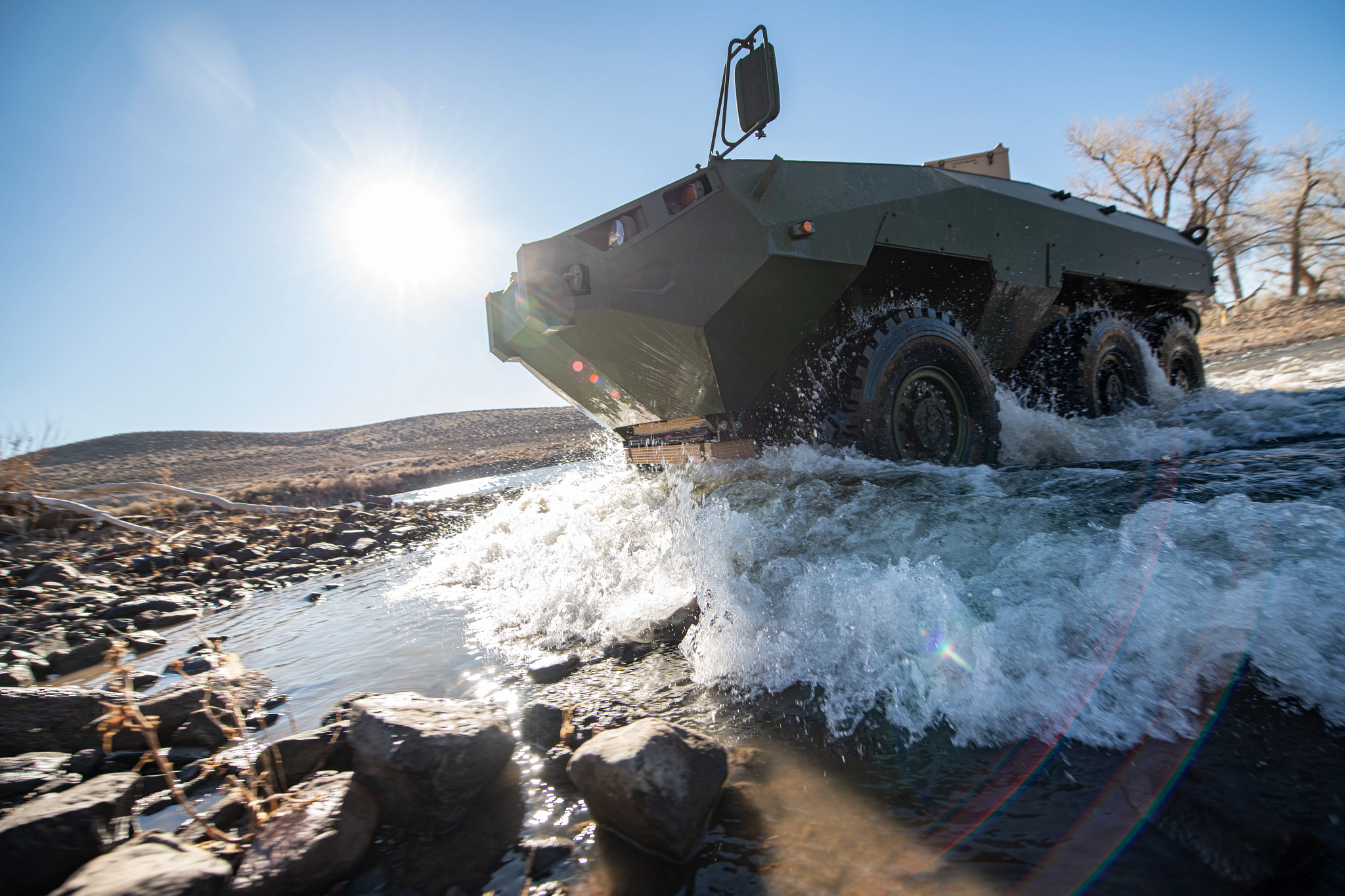
For example, Heckl said a large vehicle needing a lot of sustainment probably won’t work in the Indo-Pacific. Light reconnaissance will look different in that region than it would in other combatant commands.
The MEFs are experimenting with these different capabilities and I Marine Expeditionary Force in particular is assessing small boats to use for reconnaissance in the littorals, Lacy said.
“We’re looking at a combination of systems. So we’re looking at ultralight vehicles. We’re looking at light vehicles. We’re looking at potentially light armored vehicles,” Lightfoot told reporters in the roundtable. The Marine Corps could launch loitering munitions off some of these vehicles, he said.
Heckl said the Maine Corps is still working toward the downselect for the ARV program and doesn’t need to delay it due to the ongoing experimentation that will lead to changes to the reconnaissance requirements.
“The solution is probably going to be different for different [area of operations]. It will be different for different Marine Expeditionary Forces, as we’ve been saying from the very beginning. All III MEFs are different. They always have been. they always will be,” Heckl said during the roundtable.
These changes as a result of the experimentations could lead the Marine Corps to combine military occupational specialties. For example, a Marine who drives a LAV might also need to be a coxswain, given the potential use of small boats, Wittnam said.
Distributed Aviation
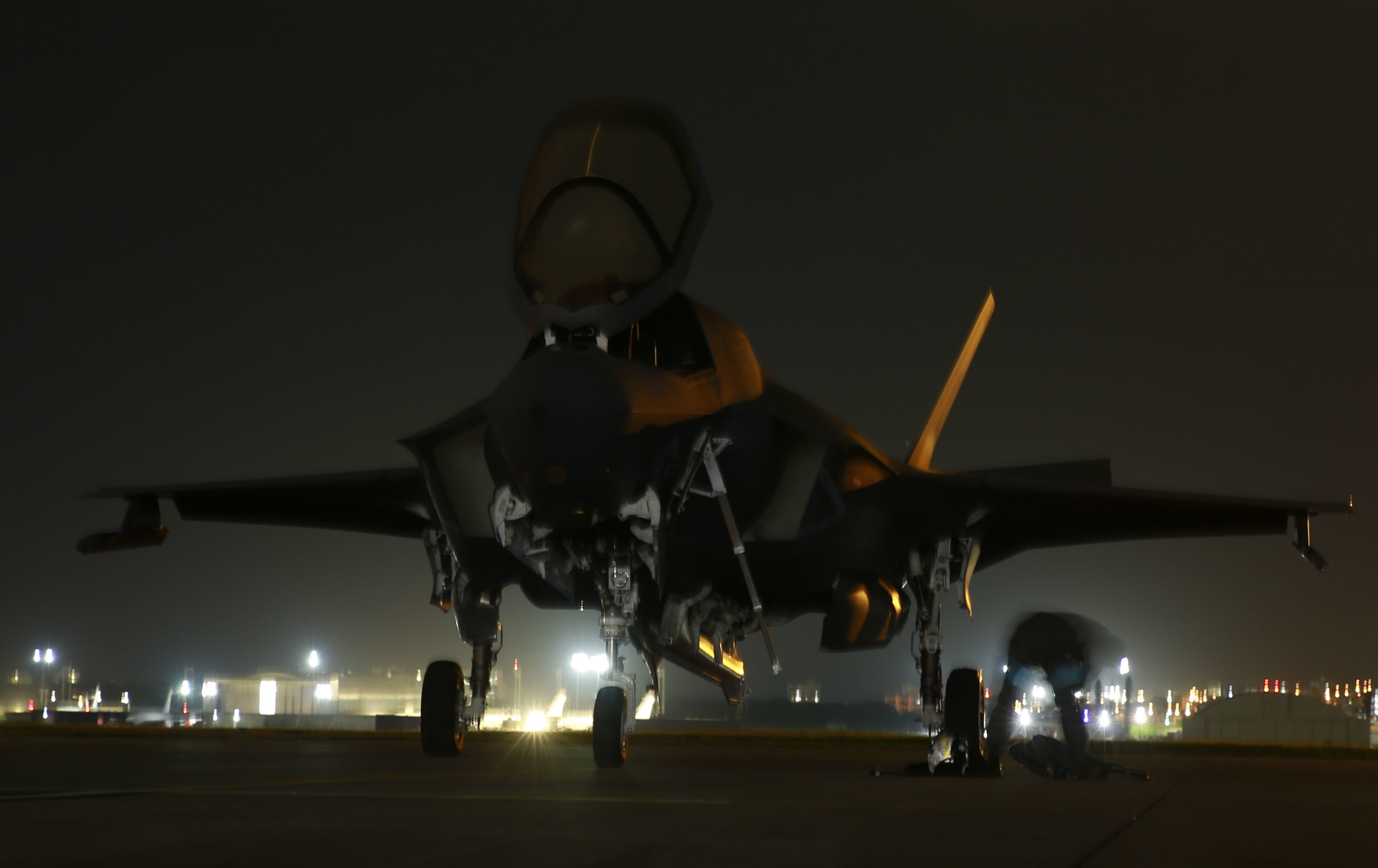
To keep up with what the service expects to experience in a vast operating area like the Indo-Pacific, the Marine Corps is pursuing “distributed aviation operations.”
By Sept. 1, 2023, the deputy commandant for combat development and integration “will develop a functional concept prospectus for DAO that describes how Marine aviation will operate in support of EABO, SiF, and broader modernization efforts,” according to the report.
Heckl described aviation as the “center of gravity” of the Marine Expeditionary Force.
“Clearly, one of the pillars of our Marine Air-Ground Task Force … needs to be able to operate within that distributed construct. So that’s where we’re going” Heckl said.
While aviation will be a big part of sustainment, Heckl noted that the sustainment piece is likely the biggest challenge in the Indo-Pacific.
“Across Force Design, across what we’re doing with Stand In Force, Expeditionary Advanced Base Operations, but particularly in a place like the Pacific with the tyranny of distance and the distributed laydown, I think that our sustainment and maintaining our readiness for aviation will be our greatest challenge because that’s going to tax everything else,” he said, pointing to the potential problems that could arise when an aircraft needs maintenance, but can’t get the parts it needs quickly enough due to the vast space in the region and time it takes to travel there.
The deputy commandant must also assess “future requirements for aviation digital interoperability and integrated fire control capability with the joint force to inform force development” by March 1, 2024, the report reads.
Aviation, according to the report, is key to the Marines contributing to naval integrated fires.
“The premier Marine aviation C2 system — the Common Aviation Command and Control System — is evolving into a small form factor capability that is MV-22 transportable and could revolutionize C2 for forward deployed expeditionary forces,” the report reads.
Joint All Domain Command and Control
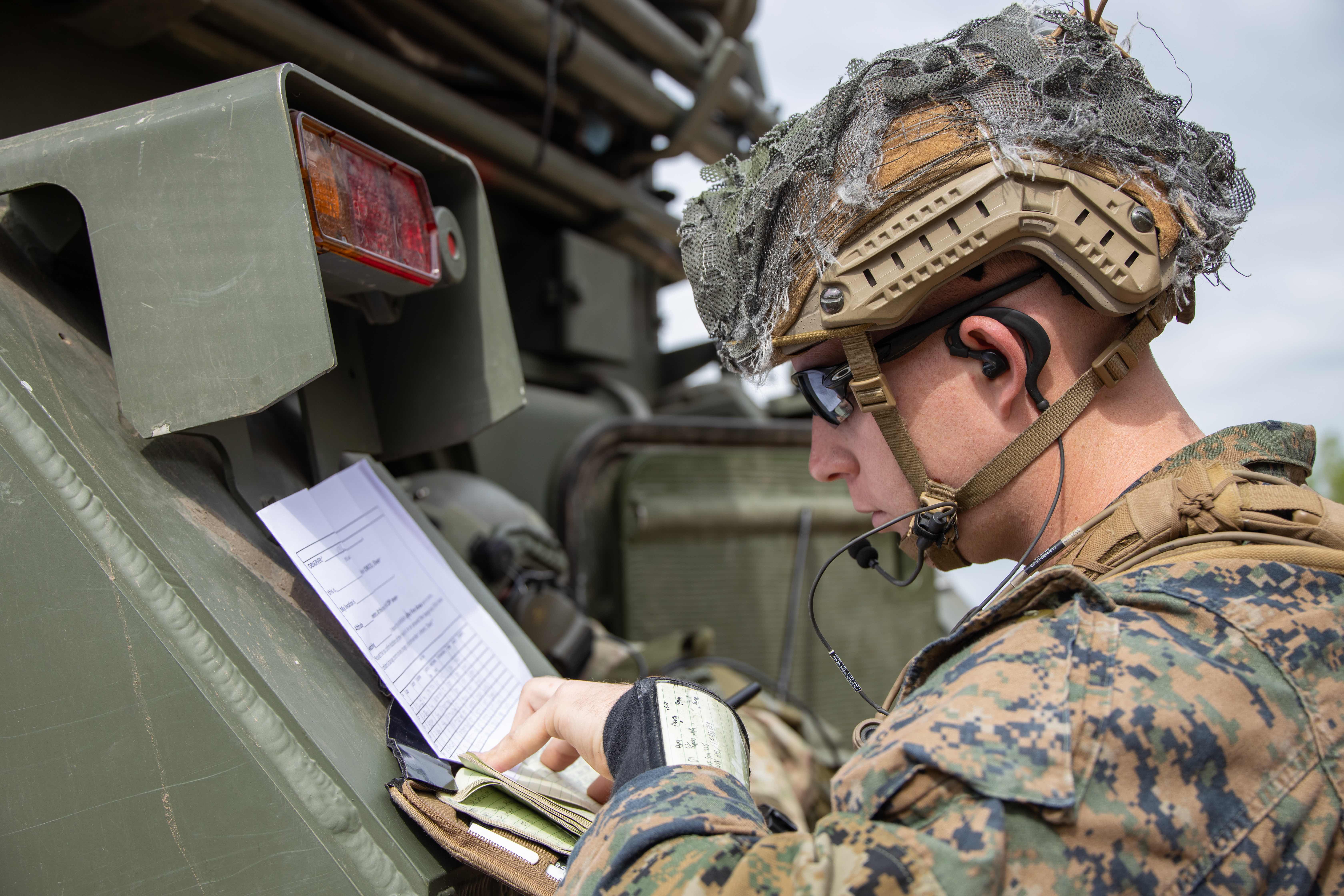
After the 2nd Marine Aircraft Wing created a multi-function air operations center, or MAOC, in Lithuania to work with NATO, the Marine Corps saw the value in using this type of construct in the Indo-Pacific.
“Recent exercises in USINDOPACOM demonstrated the MAOC’s ability to improve the common tactical picture for a carrier strike group and provided visible evidence of Combined Joint All Domain Command and Control (CJADC2) in practice,” the report reads.
Lacy, the deputy director of MCWL, said U.S. Indo-Pacific Command must develop JADC2 using a bottom-up approach. The Marine Corps is focused on what the combatant commander needs for command and control across the joint force.
“The MAOC’s mission is to generate an integrated tactical picture of the operating environment to control aircraft and missiles, enable decision superiority, gain and maintain custody of adversary targets, hold targets at risk, and enable engagement of targets in all domains in support of Marine Corps, naval, joint, ally, and partner forces,” the report reads.
By Sept. 1, 2024, the deputy commandant for aviation and the deputy commandant for combat development and integration must “institutionalize the MAOC” across the Marine Corps’ various functions, doctrines and training.
The Marine Corps is also working on a targeting cell initiative for JADC2.
“Our capstone research and development project is a family of integrated targeting cells. This effort accelerates the evolution of combined arms and multi-domain formations. We can do this by fusing operations, intelligence, and fires functions together in a single center, creating the means for Marine units to participate in and control joint fires, while also gaining and maintaining persistent custody of adversary targets”, the report reads.
By Sept. 1, 2023, the deputy commandant for combat development and integration must “develop a minimum viable product that combines the capabilities of the family of integrated targeting cells, air C2 family of systems (FoS), and ground C2 FoS. These products will deliberately integrate into USINDOPACOM’s joint fires network for immediate experimentation. The bridging solution must drive convergence of currently disparate air-land centric C2 programs of record to a singular, all-domain MAGTF C2 capability,” according to the report.
That targeting cell work is tied to the experimentation with the MAOC, Lacy said.
“This is how we view all echelons and elements of the MAGTF being tied into the combined joint [command and control] network,” he said of the targeting cell effort.
“It is the architecture. This is the JADC2 effort in a nutshell – if you will,” Lacy added.





